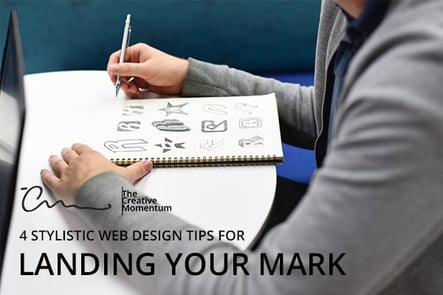
Who really "owns" a website?
Is it the business that sponsored its creation?
Is it the web design and development team that actually designed and built it?
Or is it someone else?
As a website owner, you probably believe that your website is yours. It’s not!
In truth, your website doesn’t belong to you—it belongs to your audience. They’re the consumers; the primary market for everything you do. As such, your web design and development project isn’t really about building what you want—it’s about using deliberate and stylistic choices to help you hit your mark.
Let’s review a few ways to make it happen.
1. Ignore Your Instincts (in a manner of speaking)
If the goal of your website is to engage a specific audience and drive specific behaviors, you need to create with its needs in mind—not your own.
This may mean ignoring certain instincts you’ve honed for years as a web designer or business owner. You might have a specific vision for your page that you’d love to see realized. But if your website doesn’t align with your market’s needs and preferences, there’s no point in developing it. It’s about putting aside your ego and giving end users what they want rather than telling them what they want.
2. Organize With Visual Hierarchies
You likely understand this concept intuitively, even if you haven’t heard the term. Visual hierarchies involve designing your website to give the most visual weight to the most important elements: Headlines, subheadings, CTAs, and so on. It also involves how you indent text, the amount of white space you use, and the order in which you present your information.
Overall, it’s the single best way to improve each viewer’s experience and better connect with them when they’re on-site.
Learn more about visual hierarchies here.
3. Formatting Is Your Friend
When we say formatting, we’re referring primarily to your text: How it’s broken up, the visual weight of your copy, and the use of emphasis tools, such as boldface or italics.
When designing web content (particularly for website copy), your goal is to keep things tight. People have a hard time focusing on long, text-heavy diatribes, and cramming your pages with dense text is a quick way to turn users off.
Use white space and text strategically to give your page a comfortable visual weight, and deploy bold and italic print to highlight certain elements as needed.
The idea here isn’t to provide a list of rules, but rather, to indicate that every rule is adaptable based on your audience’s desires. It makes sense to take a text-focused, informational approach to an ecommerce site, but if you’re marketing towards higher-end clientele with luxury items, you’ll do better to adopt minimalist formatting that telegraphs elegance and refinement.
4. Get Visual
We don’t need to get into the well-researched concept of how important visuals are. But what’s key to understand is how specific visuals will play with various markets.
Younger users will respond well to bold graphics, cartoons, and animations. Professional websites marketing to an older demographic may want to limit their use to one or two graphics that support the text. In-depth research pieces should limit graphics to those that provide a visual element to abstract data or concepts.
You get the idea. Include images, but make sure they have a specific function and appeal to the audience you’re trying to reach.
Convey More With Less
Effective web design is about showing instead of telling. It’s about using creativity to convey more with less. This applies to any market you’re addressing, but don’t underestimate its impact. Consumers connect with websites on many different levels, and a website with a focused approach to web design will always resonate better with viewers than those that wing it.


